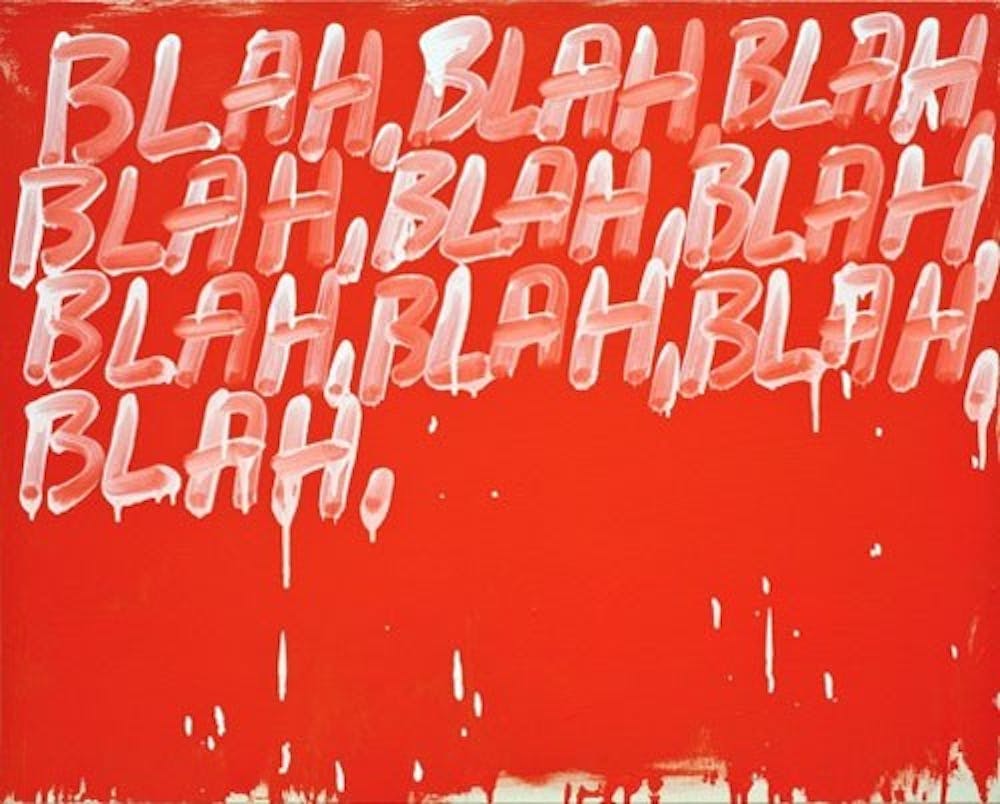Conceptual artist Mel Bochner’s main tool, when creating art, is Roget’s Thesaurus.
Unlike other artists, Mel Bochner incorporates language into his art, the words and phrases we use today in the street and texting with our cellphones.
His pieces are on display in the exhibit “Mel Bochner: Colorful Language” at the National Gallery of Art through April 8, 2012.
Bochner uses the thesaurus to play with the simultaneous relationship between reading and seeing in his works to blur, “the distinction between modes of cognition. Since the mid 1960s, Bochner [has] made drawings and paintings that force us to look at and think about the words we use,” according to The National Gallery of Art’s modern and contemporary department’s brochure.
Curator James Meyer opened the exhibit with a lecture on Bochner’s works, describing the different pieces and their rapport between words and color.
Most of his paintings contain the synonyms of their title. For example, a piece called “Money” has the words “money, moola, gelt, skins, simoleons, shekels, wampum, bread, dough” on different lines and in different colors continuing down the canvas.
“Amazing” (2011) begins with a background of dark watermelon pink, while each word is a different color, blending in and popping out of the background in different places. The words seem to “go downhill” in respectability from “Amazing!” and “Breathtaking” to “Bitchin’!” and “OMG!”
Bochner’s pieces are humorous in word choice but portray a deeper meaning of how our language has evolved and its path of development. Bochner introduces realism to conceptualism in his art through the power of words and how we use them today.
When looking at Bochner’s work, we may feel guilty at the realization of how we speak with slang and unintelligent-sounding words. Or, we may feel enlightened by the stark portrayal of a word and its development over time (apparent in most every painting).





